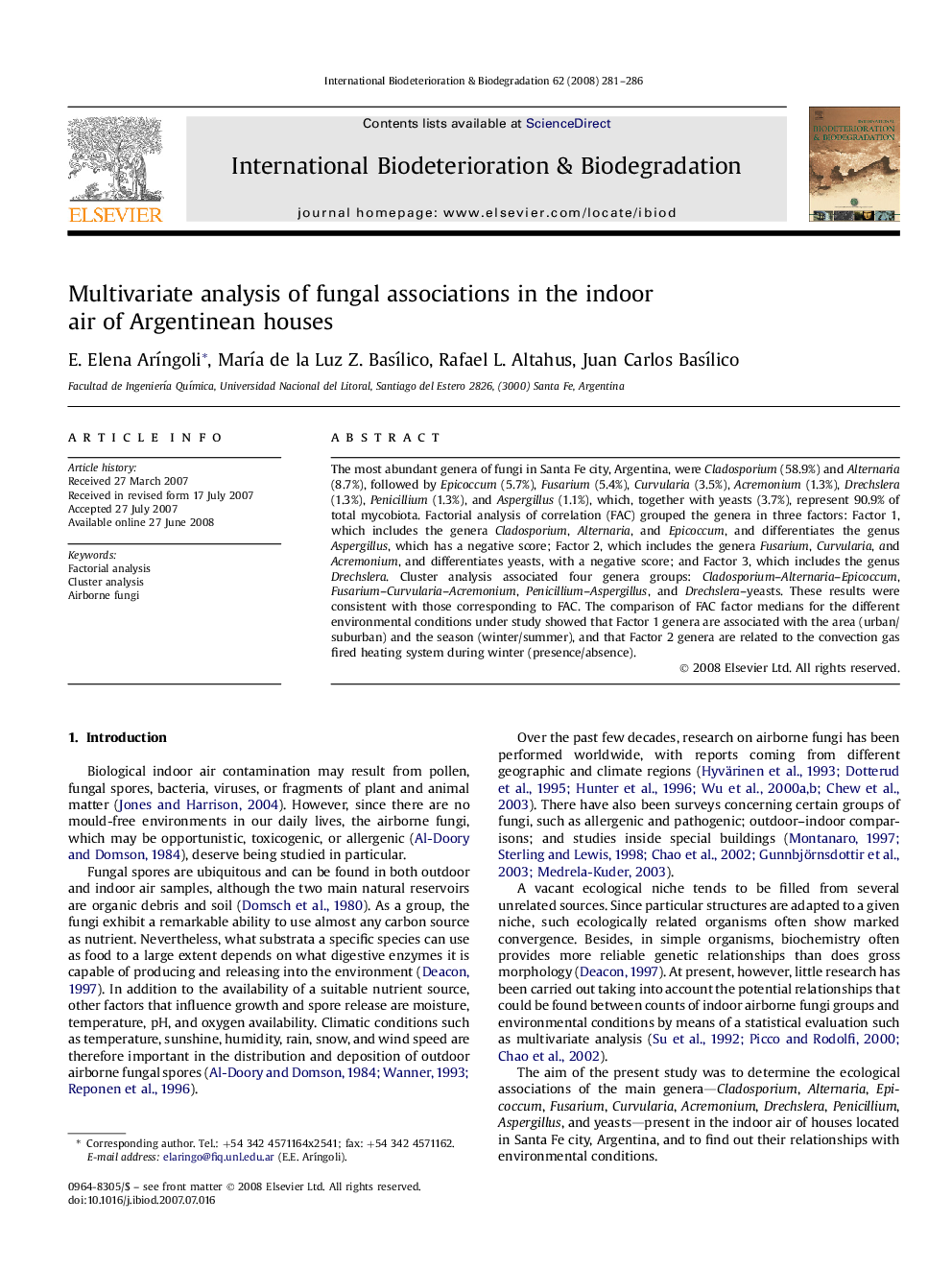| Article ID | Journal | Published Year | Pages | File Type |
|---|---|---|---|---|
| 4365692 | International Biodeterioration & Biodegradation | 2008 | 6 Pages |
The most abundant genera of fungi in Santa Fe city, Argentina, were Cladosporium (58.9%) and Alternaria (8.7%), followed by Epicoccum (5.7%), Fusarium (5.4%), Curvularia (3.5%), Acremonium (1.3%), Drechslera (1.3%), Penicillium (1.3%), and Aspergillus (1.1%), which, together with yeasts (3.7%), represent 90.9% of total mycobiota. Factorial analysis of correlation (FAC) grouped the genera in three factors: Factor 1, which includes the genera Cladosporium, Alternaria, and Epicoccum, and differentiates the genus Aspergillus, which has a negative score; Factor 2, which includes the genera Fusarium, Curvularia, and Acremonium, and differentiates yeasts, with a negative score; and Factor 3, which includes the genus Drechslera. Cluster analysis associated four genera groups: Cladosporium–Alternaria–Epicoccum, Fusarium–Curvularia–Acremonium, Penicillium–Aspergillus, and Drechslera–yeasts. These results were consistent with those corresponding to FAC. The comparison of FAC factor medians for the different environmental conditions under study showed that Factor 1 genera are associated with the area (urban/suburban) and the season (winter/summer), and that Factor 2 genera are related to the convection gas fired heating system during winter (presence/absence).
